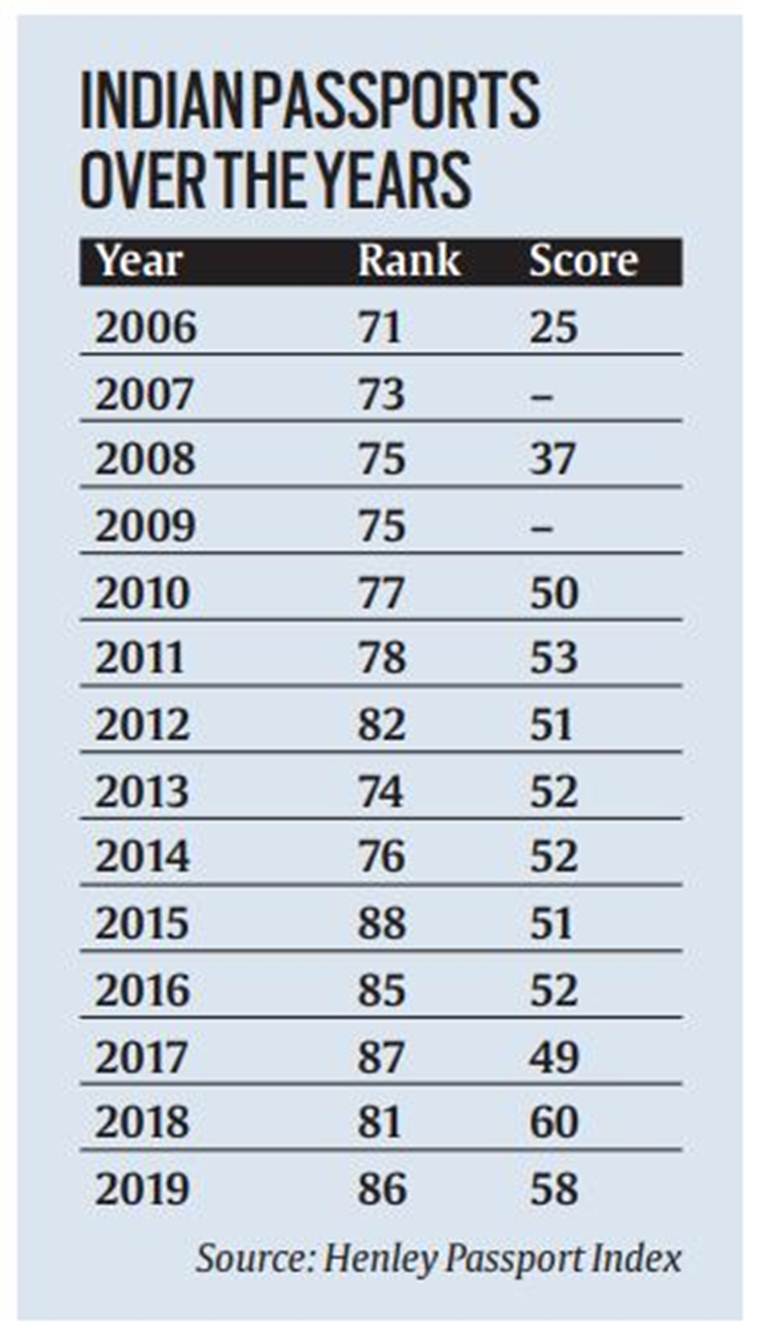Context
- The latest Henley Passport Index ranks India at 86, down five places from 81 in 2018. The index ranks passports based on their power and mobility.
- Last year, an Indian passport holder had visa-free access to 60 countries; this year, it has access to 58.
Henley Passport Index 2019
- Prepared by Henley and Partners, a London-based global citizenship and residence advisory firm, the Henley Passport Index claims to be the “original ranking of all the world’s passports”.
- The index gathers data from the International Air Transport Association (IATA) that manages inter-airline cooperation globally.
- The Index is updated in real time according to countries’ visa policy changes. It covers 227 destinations and 199 passports.
- The index receives data from the IATA on a fixed day every year that forms the basis of the index.
- This data is supplemented by accounting for real-time changes in visa policies using publicly available sources to prepare a visa list, which is a list of destinations that a passport can access visa-free, through a visa on arrival, e-visa or with a traditional visa.
How are passport ranks and scores interpreted?
- Each passport is attributed with a score and a rank.
- For instance for 2019, India’s score is 58 and it ranks 86 in the list. Japan and Singapore, on the other hand, are ranked 1 and have a score of 189.
- The score is the sum of the number of countries accessible by that passport holder without requiring pre-departure government approval for visa-types including a visitor’s permit, visa on arrival or an electronic travel authority (ETA).
- For every territory/country that a passport holder of a particular country/territory is able to access through these visa-types (without pre-departure government approval), a value of 1 is attributed to it.
- A value of 0 is attributed to a score when a passport holder has to seek pre-departure government approval for visa-types including e-visa (visas applied for online and received) and visa on arrival.
- Therefore, the total score becomes the sum total for all the values of 1.
- For instance, a passport holder from Singapore and Japan can travel to 189 countries/territories without requiring pre-departure government approval.
What does this mean for Indian passport holders?

- India has a score of 58. That is the number of destinations an Indian passport holder can travel to today, without pre-departure government approval.
- That is the same as a citizen of any country, on an average, could travel to 13 years ago.
- In 2006, a citizen, on an average, could travel to 58 destinations without needing a visa from the host nation; by 2018, this number had nearly doubled to 107.
- Afghanistan holds the weakest passport, with a score and ranking of 25 and 109, respectively. Syria and Pakistan follow with rankings of 107 and 106 and scores of 29 and 30, respectively.
- Passport rankings point towards the strength of diplomatic relations between countries.
- In the past decade travel freedom has expanded vastly as a result of the rising number of bilateral visa-waiver programmes signed between different countries and unilateral decisions implemented by governments of some countries.
What assumptions does the index make?
- The index assumes that the passport is valid, belongs to an adult who is a citizen of the issuing country and that it is not diplomatic, emergency or temporary in nature.
- It also assumes that the person travelling is doing so alone, rather than in tourist groups and meets all the basic requirements for entry such as hotel reservations.
- Furthermore, the traveller is assumed to be arriving and departing from the same airport and is seeking a short stay (between three days-several months) for business and tourist purposes only.
Source:IE
